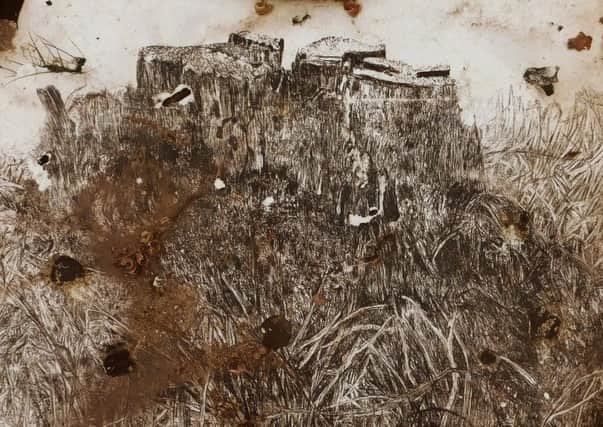Art review: Duncan of Jordanstone Degree Show, Dundee


Art review: Duncan of Jordanstone Degree Show, Dundee ****
What stands out most is the care and attention that has been applied to much of this work, both in making it and presenting it. And while the moment of leaving art school can’t coincide with the resolving of ideas and practice into finished work in every case, there is a high degree of mature, resolved work here.
A significant number of students are investing time and resources in making, and doing so to a high standard, whether in wood, ceramics, cookery or gardening. Elena Cheltsova’s superb Time Table crafted in wood and excellent ceramic pots explore notions of family, with the table as the meeting place for the generations. Louise Dickson explores similar ideas through her grandfather’s recipes, some of which she will cook for guests during the show while collecting the food memories of those who visit.
Advertisement
Hide AdAdvertisement
Hide AdCeramics feature in a number of shows, notably Olivier Gustafsson’s striking hand-made vessels which echo the forms of tribal art. Eden Thomas makes playful miniature worlds, from a bathroom with running water to a kitchen with tiny cutlery in a tiny drawer. Sandra Allan has created a small town out of cardboard, with a sharp eye and an acute sense of irony, featuring Stoner Street, The Pits and an out-of-order phone box.
Hope Carolan references Dundee’s jute-making past and women’s domestic work by transforming household objects into unique woven sculptures. Jorja Bradley playfully deconstructs household goods by suggesting that they might have alternative functions: a shower unit which could be a phone, a radiator morphing into a radio. Susan Mitchell gathers engaging stories about the ways we become connected to particular objects.
Lauren Angus’ sculptures of woven grasses and wild flowers have a delicate, ephemeral beauty, while Katherine Allan’s heartfelt show compares the worlds of medicine and gardening and the dual meaning of “growth”, filling a hospital trolley-bed with plants in response to her mother’s battle with cancer.
This year’s show has some excellent print-making, from Kirstie Behrens’ in-depth investigations of particular landscapes to Renee Hunter’s prints inspired by the legends of Maggie Osborne and Sawney Bean. Alana Hay stationed herself in the centre of Dundee producing 10-minute sketches of passers-by and has used them to create a fascinating series of prints which captures a cross-section of the city’s diverse population.
Duncan of Jordanstone can usually be counted upon to produce interesting painters, and this year is no exception. Paul McParland paints faces from old photographs found at markets, using a variety of techniques to capture the sense of passing years and vanishing memories. Dani Scott also paints in monochrome, using photographs but with very different results, creating fresh angles on her subjects – her family and friends – by concentrating on gestures and details.
Sasha Mackay’s self-portraits are vigorous and expressive and she manages the rare trick of making highly personal work which doesn’t feel self-indulgent. Calum Stevenson uses elements of his own experience too, and of the landscape of his home town,
Cumbernauld, with results that are finely realised and surprising.
Advertisement
Hide AdAdvertisement
Hide AdHannah Benassi’s paintings in tones of browns and golds are inspired by the buildings and light of her native Italy, while Sophie Hymers paints small, delicate landscapes of Scotland which lead the viewer on a journey. Darryl Cooney works with abstraction, making playful, colourful paintings which teeter on the edge of chaos, yet admirably never loses control of the material.
In a degree show surprisingly low on photographic and electronic media, the collaborative work of Owen McLaughlin and Jodie Williamson stands out for the way it explores place, transplants Walter Benjamin’s flaneur from Paris to Dundee, and taking a sidelong look at a society obsessed with looking and being looked at.
Several students are interested in making work which explores how contemporary life is subject to constant surveillance: Toby Jackson takes the idea of a security camera gone rogue, filming viewers who enter the space and projecting them – rather disconcertingly – on to the screen they’re looking at, while Duncan Pottinger has attached a camera to a robotic arm which swivels in response to viewers’ movements.
Jek McAllister uses less sophisticated technology to examine the fact that much of contemporary life is mediated through screens. By building a wooden screen attached to a mount and fronting it with glass, she has made a simple device which reflects not only her work but the viewer and the buildings that can be seen through the window behind us. It succinctly encapsulates the problem of knowing what is “real”, another example of finding a fresh way to frame (no pun intended) one of the pertinent questions of our times. - Susan Mansfield
Until 26 May